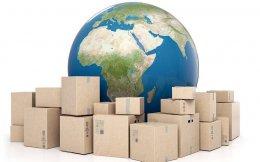Indian markets have been battered in 2011, first on domestic issues, and last month on global cues. But just how much will global events hurt Indian GDP and corporate houses? In our base case, not as much as expected. India remains overwhelmingly exposed to the domestic economy, which is why its earnings outperformed in the last downturn.
How Exposed Is India In A Global Slowdown?
Last month had an eerie sense of déjà vu to it. The global tremors reached India, with $2.1 billion of FII outflows and the Sensex falling 8.4 per cent in the month, taking it to down 19 per cent YTD. Stepping back from the jumpiness of August, how will global events really impact India? That depends on what you think will happen in the world. We see two scenarios – one ‘base’ case, which will hurt India less than assumed and one ‘unthinkable’ scenario in which case you are better off buying tinned food.
Our base case is that, this is a growth crisis. Developed economies, on the already slow road to recovery post-financial crisis, have seen growth prospects sharply reappraised, driven by higher oil prices, Tsunami supply chain disruption and as overly short-term and aggressive fiscal austerity is forced on them by bond markets. The ‘unthinkable’ is European banks being dragged down by the sovereign credit crisis and the Euro imploding. This is possible, and just because there is no text book solution to Eurozone debt problems, it really frightens markets. But this scenario remains a tail risk rather than a base case.
BSE 100 Sector & Stock Exposure
India Inc.’s global exposure grew from 2006 to 2009, rising from 15 per cent to 27 per cent of revenues on average, but has since fallen back to 24 per cent. But the exposure is very sector-specific. Overall, Indian corporate houses are principally exposed to the domestic economy.
In the last downturn, this domestic exposure meant India’s earnings outperformed significantly, compared to overall MSCI Emerging Markets, Asia ex Japan and World. What hurt Indian equities in 2008 was the massive outflow of capital, not earnings performance.
Could it happen again? Yes, but only if you assume our ‘unthinkable’ scenario happens. So far, the outflows in 2011 have been only 0.4 per cent of those seen in 2008. If this is a crisis of confidence in growth in developed economies, then India should fare much better. Global funds have to go/stay somewhere. Right now, the rest of the world makes India look increasingly good. The US and the EU issues are well known, whilst China is more globally exposed and has to adjust to an erosion of its wage competitiveness.
India’s main corporate challenges – weak and declining margins – are driven by commodity inflation and rising funding costs. If anything, the global slowdown (if it moderates commodities & crude) helps in the inflation challenge. India has taken a lot of its pain upfront, its valuation has fallen (13.6x), the peak in interest rates and inflation may be seen in September and October respectively and there is even some prospect of progress on corruption and reforms.
India’s Economy: Still A Domestic-driven Story?
India’s exposure to the global economy has increased, but it remains an overwhelmingly domestically driven economy. Whilst trade has risen as a percentage of GDP, its contribution to growth is very small. The destination of India’s exports has also been changing – The US and the EU accounted for 45 per cent in 2001, but it’s only 30 per cent now. So, while we expect export growth to slow, it should remain healthy at over 25 per cent YoY.
Rising rates have taken their toll on pockets of credit-related spending (autos, housing, some consumer durables) but overall, domestic demand remains strong, driven by robust services growth, rising incomes, fiscal support for the rural economy and higher middle class aspirations. This is reflected in private consumption growth averaging 8.6 per cent in FY11.
The extent of damage to India’s economy through global exposure comes through two channels – trade and foreign flows. Looking at the trade side, one key implication of the global growth slowdown will be a moderation in the current pace of export growth, which topped 45 per cent YoY in the first quarter of FY12. That, plus the stellar growth of 82 per cent in July, was likely on account of execution of orders received well before the EU and the USA started to slow down again.
However, it must be remembered that India continues to be a consumption/domestic demand-driven economy. Although trade as a % of GDP has been steadily going higher, the contribution of trade to growth is very small. In fact, India being a net importer, the contribution for most years has been negative.
There are no widespread signs of slowdown in the overall domestic demand pattern. The main issue for corporates is that higher commodity prices are eating into the margins and adding to inflationary pressure.
Private consumption growth, which contributed more than half to GDP growth in FY11, has been the key driver of domestic demand. The robustness is highlighted in the fact that private consumption growth averaged 8.6 per cent in FY11, higher than in FY10, with overall GDP growth of a respectable 8 per cent YoY.
Also, the growth trajectory has been better than it was in the slowdown of FY09, when private consumption, though still strong, registered a lower growth of 7.7 per cent YoY. Domestic demand continues to be supported by strong rural demand, led by fiscal expansion, still-robust growth in the services sector, rising incomes and higher aspirations of the middle class (who, in sharp contrast to the West, remain immensely confident of their earnings growth). The key issue on the RBI’s radar is not domestic demand but inflation, which has been very stubborn and largely driven by high global commodity prices. Indian producers are commodity price takers, and rising global input prices and a corresponding rise in output prices have been a key reason behind the current demand-led inflationary pressures. What a global slowdown may, in fact, do is provide respite from higher global commodity prices. It may, in turn, go a long way in containing domestic price pressures, giving RBI a reason to pause in its current rate hike cycle.
But which are the regions to which India is most exposed in terms of trade and how has this changed?
The EU and the USA combined contributed to over 30 per cent of India exports in FY10. This is the quantum which can be impacted if the USA and Europe do, indeed, slow down. But it is important to note that the dependence of Indian exports on these two regions has been steadily going down. From a combined contribution of 45 per cent to Indian exports in 2001, the share went down to 38 per cent in 2005 and 30 per cent now. Thus, it’s the growth and robustness in other economies in Asia and OECD which now matter more for India exports. Within Asia, the share of China and ASEAN region has risen significantly over the years. While we are not concluding that the current pace of exports will be immune to global slowdown, we feel that the impact may be limited as India’s export destinations are not only diverse but also found in regions other than the USA and the EU. Thus, while the current pace of exports is unlikely to sustain, we expect export growth to be healthy (over 25 per cent YoY) in FY12.
(Nick Paulson Ellis is the country head, India, Espirito Santo Securities.)






